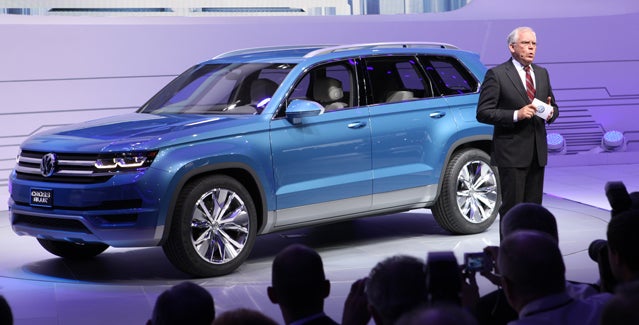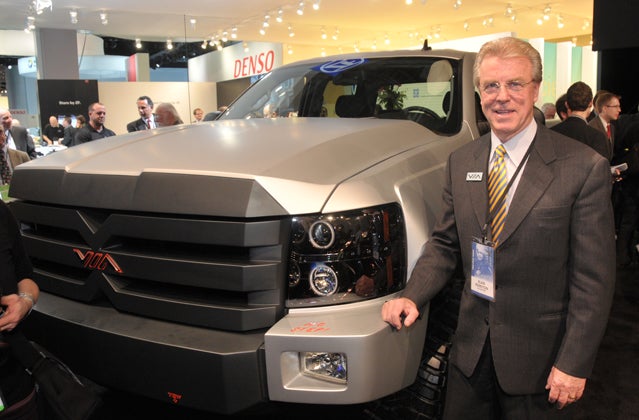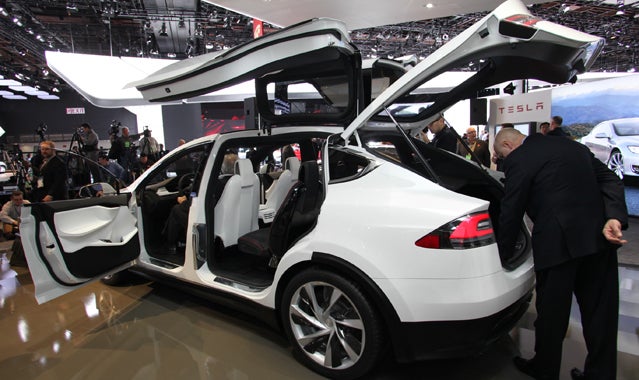
The latest update of the , a federally-mandated report written by a panel of 240 scientists, was released January 11 and is meant to erase any doubts as to whether climate change is having a real, palpable impact on our daily lives.
“Climate change affects everything that you do,” co-author Susan Cutter, director of the Hazards and Vulnerability Research Institute at the University of South Carolina, told the . “It affects where you live, where you work and where you play and the infrastructure that you need to do all these things. It's more than just the polar bears.”
Aside from making everyone rather depressed by the changing climate and the resources that are at stake, the report is meant to push regulators into action. That process is maddeningly slowÔÇöarguably slower than the pace at which the climate is changing. When Cutter talks about our climate impacting the places we play and the infrastructure we use, that includes the cars we drive to access the places we love. The Obama administration has made some bold moves in fuel efficiency standards, mandating an average of 54.5 miles per gallon for cars and light trucks. By 2025. That's impressive, but loses some of its shine given our imperative to significantly reduce carbon emissions starting now (or decades ago).
Still, carmakers are reacting to fuel standards that are coming into play nowÔÇöa 35.5mpg average by 2016. Because it's an average, and because efficiency is easier to obtain in smaller vehicles, the most efficient vehicles have traditionally not been the same cars and trucks people use to play in the mountains. That is starting, ever so slowly, to change.
Herewith, a look at some of the sport utility car and truck concepts (some of which are hopefully bound for production) seeking the spotlight at the (NAIAS) in Detroit.
VOLKSWAGEN CROSS BLUE HYBRID
Four-wheel drive, seating for seven and an 89mpg equivalent (in electric mode) and 306 horsepower. Wowza. The Cross Blue uses a plug-in diesel-hybrid engine with a range of interesting features, including the option to use the engine to recharge the battery on the fly and the option to use the car's battery pack to power electrical equipment outside (hello, film fest at the campground). When using the diesel engine, the efficiency drops to a combined 37mpg highway, which is still better than just about any gas-powered SUV or crossover you'll find on the market. With an 18.5-gallon tank, this rig could run for 660 miles before needing fuel.
VIA E-SUV
is a startup with pedigree. A former General Motors vice chairman and an industry
firebrand is behind this venture, and while the company is focused on
commercial fleets and tradespeople who need rugged trucks with a lot of
onboard power, I think the technology behind its vehicles will find its
way to the consumer market. To wit, at NAIAS Via unveiled its X-Truck,
an “Escalade class” concept electric 4×4 SUV. Its four-door pickup,
however, is due out in 2014. Via's trucks get a reported 40 miles of
range on their electric motors. That's terrible when viewed in relation
to other EVs on the market, but impressive when considering these are four-wheel drive trucks. After exhausting those 40 miles (that's optimal,
as in good weather and flat roads), the vehicle uses an internal
combustion engine to power a generator which in turn recharges the
batteries, making this an “extended range” EV. This gives the vehicle a
total of around 400 miles per fill-up and around 100 miles of range per
gallon (the EPA has not yet verified this).

HONDA URBAN SUV
Honda does not generally create a concept car unless it plans to put it into production, and just about everyone reporting from Detroit says “except to see this small SUV in showrooms.” Widely compared to the Nissan Juke, the Urban SUV concept is a marriage of small size, efficient powertrain, and an all-wheel-drive option. In terms of efficiency, I'd expect it to come in somewhere between the Honda Fit (35 highway) and the CR-V (31 highway). Or, it could be much higher, if Honda goes with a hybrid powertrain.
NISSAN RESONANCE
This four-wheel drive hybrid electric crossover looks like a mashup between an adventure wagon and a high-end sedan. Nissan hasn't released much detail on this concept car, such as expected fuel efficiency, but one thing is obvious: You won't be tossing your mountain bike into the backseat. This is one compact crossover.
TESLA MODEL X
This electric crossover vehicleÔÇöassuming Elon Musk's confidence is well placed and his enterprise really does hit a production stride that will carry it past its current Model S and into the mainstreamÔÇöis going to be drool-worthy. The is similar to the Model S, with the addition of a second electric motor in the front, providing more power but also making it an all-wheel-drive vehicle. It is expected to get 265 miles on a single charge (which you'll need, because charging stationsÔÇöespecially Tesla's proprietary fast-chargersÔÇöare going to be pretty hard to come by in the middle of nowhere, USA, at least for the next decade or so.

ÔÇöMary Catherine O'Connor